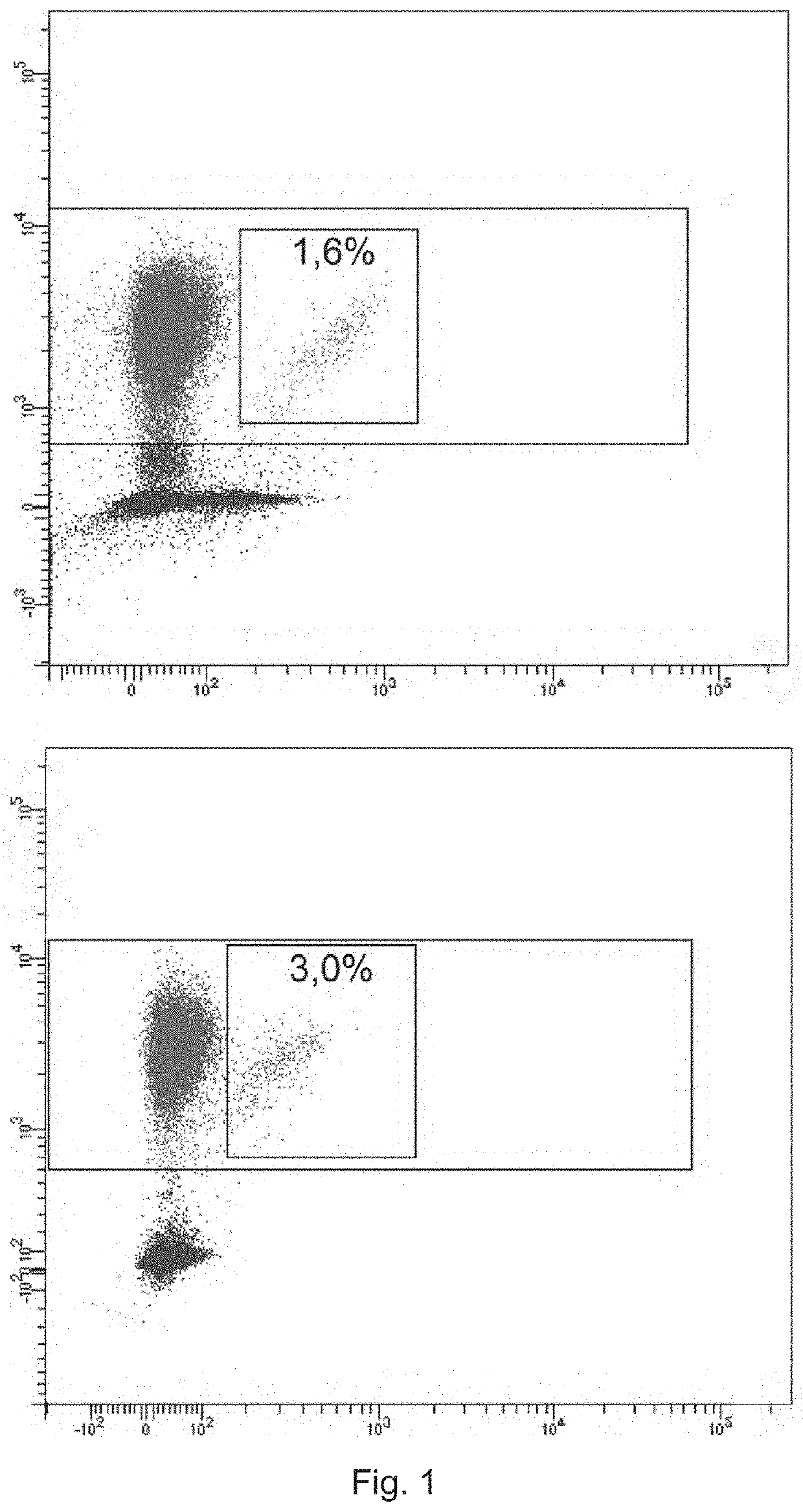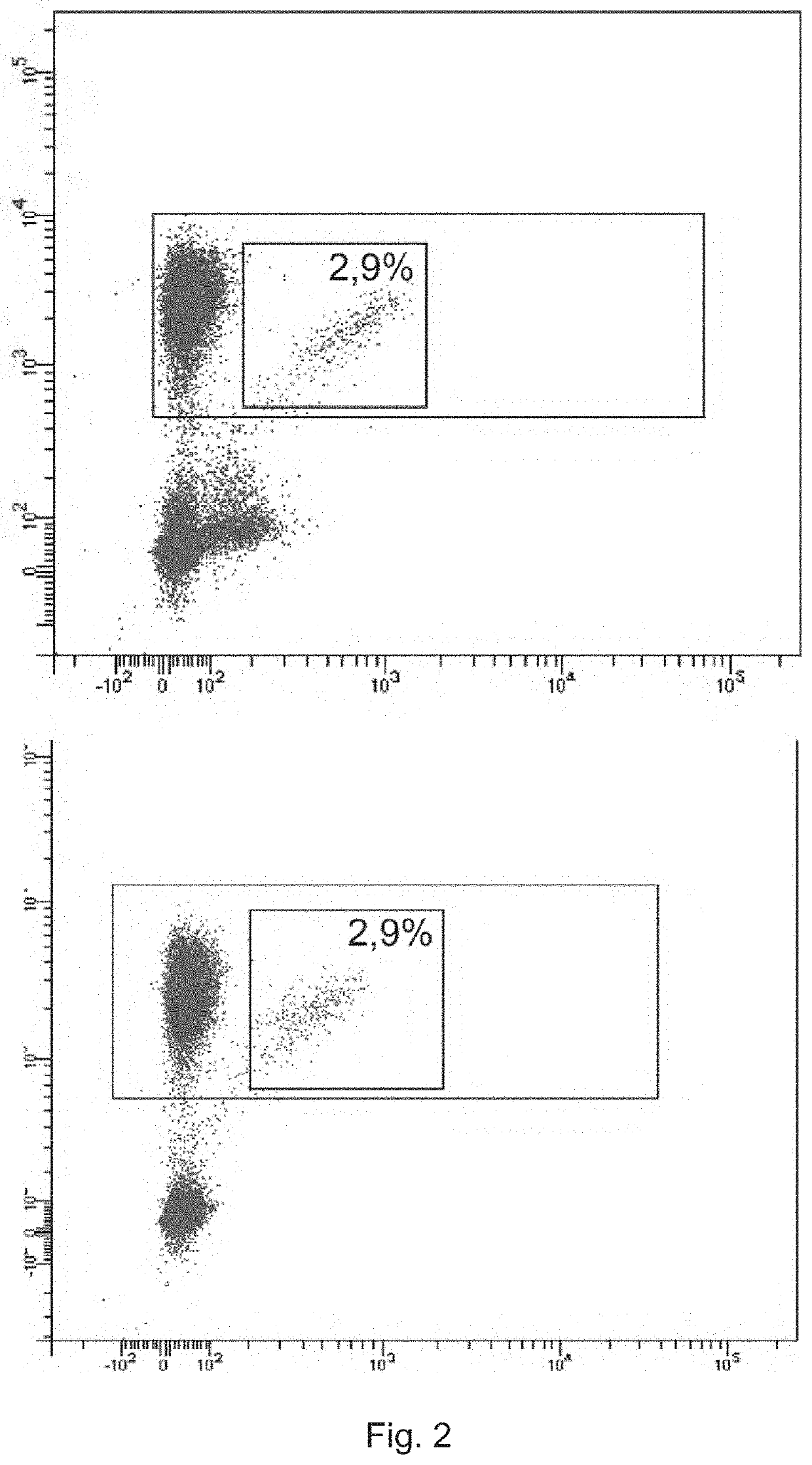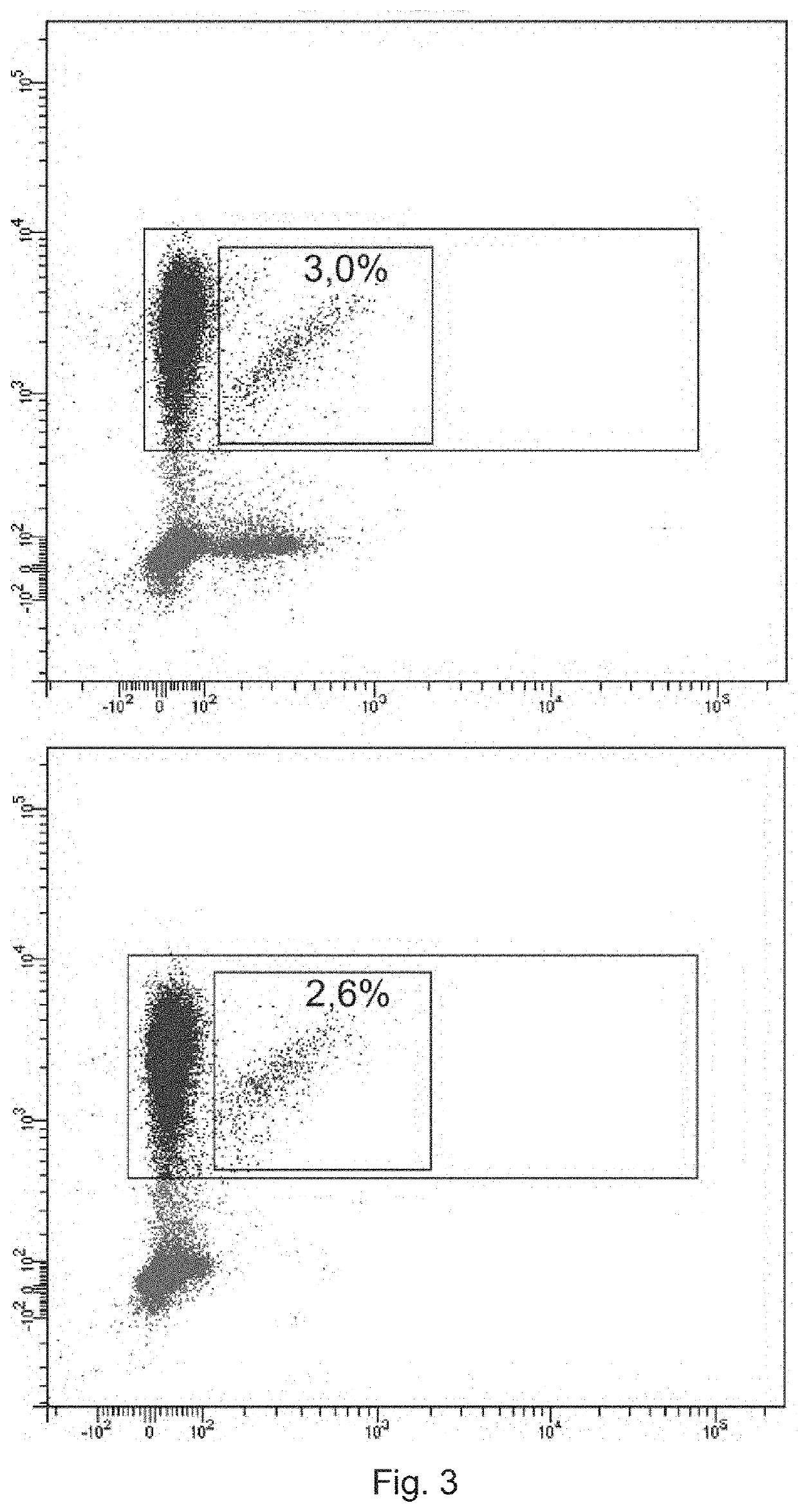Monoclonal antibodies and methods for using same
a monoclonal antibody and monoclonal antibody technology, applied in the field of biotechnology and biomedicine, can solve the problems of ineffective drug development, lack of convincing evidence of pathogenesis connection, and decrease in inflammation, so as to prolong remission and improve treatment
- Summary
- Abstract
- Description
- Claims
- Application Information
AI Technical Summary
Benefits of technology
Problems solved by technology
Method used
Image
Examples
example 1
n and Purification of Antibody
[0188]Nucleic acids (SEQ ID NO: 10, 12, 14, 16, 18) encoding the variable domains of antibody heavy and light chains were obtained by amplifying DNA fragments using overlapping primers and high-fidelity Q5 polymerase (NEB, USA). The obtained nucleic acids were purified on columns from Quagen (Germany) using a reagent kit (#28104) and targetedly cloned into commercially available pFuse vectors comprising constant regions of human heavy (IgG1) and light (kappa) chain genes (Invivogen, USA). The sequences of the cloned fragments were confirmed by sequencing using the Sanger method.
[0189]As a result, plasmids comprising coding sequences for four antibody heavy chain variants were obtained:
[0190]HV anti-TRBV9-1, the nucleotide and amino acid sequences of which are shown in SEQ ID NO: 20 and 21;
[0191]HV anti-TRBV9-2, the nucleotide and amino acid sequences of which are shown in SEQ ID NO: 22 and 23;
[0192]HV anti-TRBV9-3, the nucleotide and amino acid sequence...
example 2
ti-TRBV9 Monoclonal Antibodies for Labeling T Lymphocytes Expressing TCR Beta-Chain Belonging to TRBV9 Family
[0201]Monoclonal antibodies (anti-TRBV9-1, anti-TRBV9-2, anti-TRBV9-3, anti-TRBV9-4, characterized in the heavy chain CDR3 sequence) were produced as described in Example 1. To visualize the antibodies, they were labeled with fluorescein using fluorescein isothiocyanate reagent (Sigma, USA) according to the manufacturer's protocol. The amount of fluorophores that reacted with antibody molecules was controlled by absorption spectrum ratio at wavelengths of 495 / 280 nm. Labeled antibodies were used to detect T lymphocytes expressing the TCR beta-chain of the TRBV9 family in the mononuclear fraction of human blood.
[0202]The peripheral blood of 5 healthy donors was used to obtain this fraction. Blood was collected in EDTA Vacuette tubes (2×9 ml each), the mononuclear fraction was isolated according to the standard procedure described in (Kovalchuk L. V. et al. Immunology: Workshop...
example 3
l Activity of Antibodies
[0209]Monoclonal antibodies (anti-TRBV9-1, anti-TRBV9-2, anti-TRBV9-3, anti-TRBV9-4, characterized in the heavy chain CDR3 sequence) were obtained as described in Example 1. The mononuclear fraction of human blood was obtained as described in Example 2.
[0210]Further, natural killer cells were isolated from a portion of mononuclear fraction using human NK cells isolation reagent kit #130-092-657 (Miltenyi biotec, USA). The manufacturers' protocol was used. The quality of NK cell isolation was assessed by cytofluometry (BD FACS ARIA III, USA) using labeled antibodies CD16-FITC, CD56-PE, CD3-VioBlue. The enrichment with NK cells was 85-95%.
[0211]To assess cytotoxicity, antibodies (anti-TRBV9-1, anti-TRBV9-2, anti-TRBV9-3, or anti-TRBV9-4) were added to an aliquot of mononuclear fraction comprising 1×106 cells to a final concentration of 5 μg / ml. Antibodies Remicade at the same concentration as anti-TRBV9 antibodies were used as a negative control. No antibodies ...
PUM
| Property | Measurement | Unit |
|---|---|---|
| time | aaaaa | aaaaa |
| time | aaaaa | aaaaa |
| time | aaaaa | aaaaa |
Abstract
Description
Claims
Application Information
 Login to View More
Login to View More - R&D
- Intellectual Property
- Life Sciences
- Materials
- Tech Scout
- Unparalleled Data Quality
- Higher Quality Content
- 60% Fewer Hallucinations
Browse by: Latest US Patents, China's latest patents, Technical Efficacy Thesaurus, Application Domain, Technology Topic, Popular Technical Reports.
© 2025 PatSnap. All rights reserved.Legal|Privacy policy|Modern Slavery Act Transparency Statement|Sitemap|About US| Contact US: help@patsnap.com



